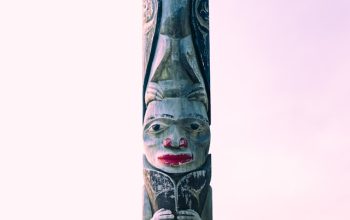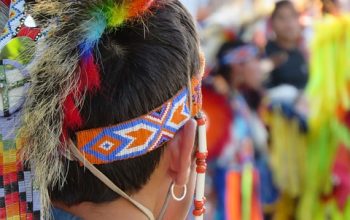The history of the Shuswap people, or Secwepemc, is deeply intertwined with the rich tapestry of languages indigenous to Canada’s landscape. The Secwepemc territory spans the south-central region of British Columbia, where the Shuswap language, part of the Salishan language family, has been spoken for thousands of years. However, the advent of European colonization initiated a series of events that led to the marginalization of indigenous languages across Canada, including Shuswap. Residential schools, introduced in the late 19th century and operational well into the 20th century, played a significant role in this decline. These institutions were part of a broader government policy aimed at assimilating indigenous children into European-Canadian culture, which included prohibiting the use of indigenous languages. As a result, the fluency and transmission of the Shuswap language from one generation to the next were severely impacted, leading to a critical decrease in the number of fluent speakers by the late 20th century. Recent estimates suggest that fewer than 500 fluent speakers remain, most of whom are elders, making the Shuswap language critically endangered.
Educational Programs and Resources for Revitalization
In response to the threat of language extinction, the Secwepemc community, in collaboration with various educational institutions and governmental bodies, has initiated several programs aimed at revitalizing the Shuswap language. One of the pioneering efforts in this regard is the establishment of the Secwepemc Cultural Education Society (SCES) in 1981. The SCES has developed a comprehensive curriculum that includes language immersion programs for children, language courses for adults, and teacher training programs to prepare the next generation of Secwepemc language educators. Additionally, the Chief Atahm School, founded in 1991 on the Adams Lake Indian Band, stands as a beacon of hope for language preservation. It offers a K-12 immersion program that integrates the Secwepemc language and culture into all aspects of learning, demonstrating the potential for immersion education in revitalizing endangered languages. Furthermore, Thompson Rivers University in Kamloops has been instrumental in providing higher education opportunities for studying the Shuswap language and culture, offering certificates and degrees in Indigenous language revitalization.
Digital Resources and Community Initiatives
The digital age has opened new frontiers for the preservation and revitalization of the Shuswap language. Various digital resources have been developed to make learning accessible to a broader audience and to support the efforts of educators and learners alike. One notable example is the FirstVoices, a web-based platform that archives indigenous languages, including Secwepemc. It offers a repository of words, phrases, audio recordings, and language games, making it an invaluable resource for both learners and educators. Additionally, the Secwepemc community has embraced social media and mobile applications to engage younger generations. Apps like Speak Secwepemc, designed to teach the language through interactive lessons and games, represent the innovative approaches being adopted to attract younger learners. Community initiatives also play a crucial role in language preservation. Events such as language camps, storytelling sessions, and cultural workshops provide immersive experiences that foster a deeper connection with the language and culture among community members of all ages.
The Role of Elders in Language Transmission
Elders hold a revered position in the Secwepemc community, not only as the custodians of traditional knowledge and culture but also as the primary bearers of the language. Their role in language transmission is pivotal, as they are often the sole fluent speakers in their communities. Through storytelling, traditional ceremonies, and everyday conversation, elders impart linguistic knowledge and cultural values to younger generations, ensuring the survival of the Shuswap language. Recognizing the importance of this intergenerational transmission, many language revitalization programs prioritize creating spaces where elders and youth can interact, facilitating the natural flow of language learning.
Challenges and Future Directions
Despite these efforts, the revitalization of the Shuswap language faces several challenges. The scarcity of fluent speakers, limited funding for language programs, and the pervasive influence of English pose significant obstacles. However, the resilience of the Secwepemc people and their innovative approaches to language learning, from immersive education to digital resources, offer hope for the future. Ongoing collaboration between indigenous communities, governmental agencies, and educational institutions is crucial to sustain these efforts.
Engaging the Global Community
The struggle to preserve the Shuswap language is not isolated; it mirrors the global challenge of safeguarding indigenous languages and cultures. By sharing their experiences and strategies for language revitalization, the Secwepemc people contribute to a broader dialogue on indigenous rights and cultural preservation. Engaging with the global community through conferences, partnerships, and digital platforms amplifies their voice and draws international support for their cause, highlighting the universal importance of linguistic diversity and cultural heritage.
Kanata Pelq’ilc, a Secwepemc historian, studied at the University of British Columbia, enriching his passion for sharing his culture’s history. Through his blog, he advocates for the preservation of Shuswap traditions and environmental stewardship, bridging historical wisdom with modern relevance. His efforts highlight the Secwepemc’s deep land connection, promoting cultural understanding and respect.




